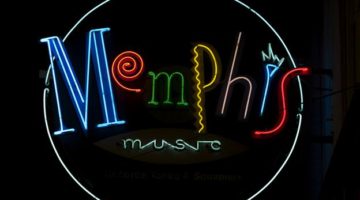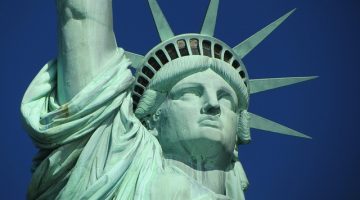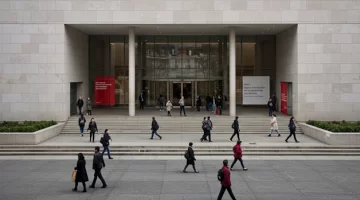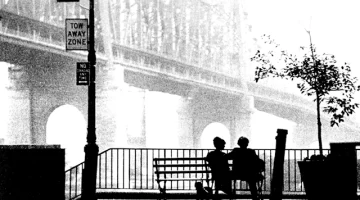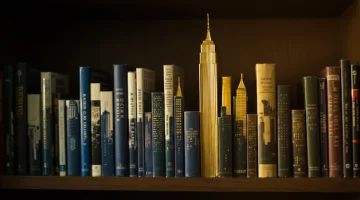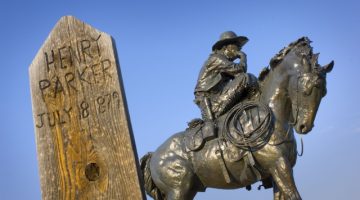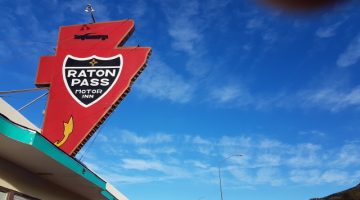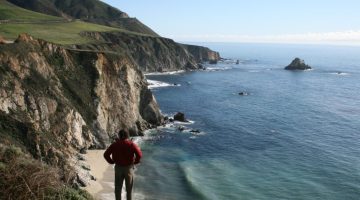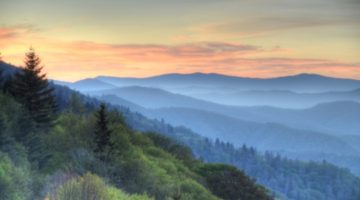The Stones Meet the Swampers in Muscle Shoals
Mike Gerrard heads for Muscle Shoals in Alabama, where he is one of only a handful of journalists to get a first look behind the scenes at the Muscle Shoals Sound Studios.
I’ve come all the way to the tiny town of Muscle Shoals in Alabama and I’m looking at a toilet. In fact people are queuing up to look at the toilet, and even have their private moments inside the cubicle that’s just a few feet square. It’s a toilet of musical significance.
I’m with a group of music writers who have flown from Austria and Amsterdam, from Hamburg and Hanover, from New York and London, and we’re the first outsiders allowed to gaze at this toilet for many years. For this is the toilet in which Rolling Stone Keith Richards finished writing the song Wild Horses for their 1971 Sticky Fingers album, acclaimed as their best ever recording.
If you weren’t around at the time, it’s hard to appreciate the impact this album had. It was the first to appear on their own new record label, Rolling Stones Records, and the first without their founder member Brian Jones, who had died in 1969. For the cover, they commissioned Andy Warhol to come up with something original, and he certainly didn’t let them down. The cover of the 12″ vinyl disc showed the crotch of a guy wearing tight jeans, which unzipped a few inches. The man was clearly well-endowed, though the model wasn’t – as rumours at the time suggested – Mr Jagger himself.
The title Sticky Fingers was obviously open to interpretation. And then there were the lyrics. The searingly honest Sister Morphine was co-written by Jagger, Richards and Marianne Faithfull, though she wasn’t credited at the time and had to take legal action to get her co-writer credits.
The most provocative song, though, was Brown Sugar, which has been a classic and a constant presence in their set-list ever since.
Brown Sugar, how come you taste so good?
Brown Sugar, just like a young girl should.
‘When they played Brown Sugar,’ says Jimmy Johnson, ‘I thought the building was going to come off its foundations.’

Johnson was the guitarist in the Muscle Shoals Rhythm Section, better known as The Swampers. The band is name-checked in Lynyrd Skynyrd’s Sweet Home Alabama:
Now Muscle Shoals has got the Swampers
And they’ve been known to pick a song or two
The Swampers were the main reason the Stones made their way to this little place on the Tennessee River, not far from Memphis and Nashville. The Muscle Shoals musicians had played on Number One hit tracks including Mustang Sally by Wilson Pickett, Aretha Franklin’s Respect, and When a Man Loves a Woman by Percy Sledge. It was widely assumed that the band was black. In fact, as Bono says in a recent documentary about Muscle Shoals, they were four white guys who looked like they worked in the supermarket round the corner.
As well as playing guitar, Jimmy Johnson was also skilled as an engineer and producer. Partly as a result of his time with the Stones, he would later go on to work with names like Paul Simon, Linda Ronstadt, Rod Stewart, Cher, Joe Cocker, Willie Nelson, Eric Clapton and Bob Dylan. But when the Stones came to spend three days at the Muscle Shoals Sound Studio at 3614 Jackson Highway, a nondescript building opposite the Oakwood Cemetery, Johnson did not expect to be as involved as he was.
‘To be honest, I didn’t like the Rolling Stones music. They said they played the blues but to me that wasn’t the blues. I grew up with the blues, and listening to Chuck Berry. So I wasn’t that excited that they were coming. But by the time they finished, I had a lot of respect for those guys.’
Johnson found himself responsible for engineering the three songs the Stones did in their three days at Muscle Shoals – their own Brown Sugar and Wild Horses, and the blues standard You Gotta Move.
‘Their regular producer was a guy called Jimmy Miller,’ says Johnson, ‘but he wasn’t able to make it so I was asked to step in.’
The Stones were never meant to record in Muscle Shoals at all. They were in the USA to do a tour but didn’t have permits to make recordings. After a member of the audience was killed in front of the band at a free concert at Altamont on 6th December 1969, they cancelled some concerts and had time on their hands. They took the chance to get away to the relatively unknown Muscle Shoals, booked themselves into the Holiday Inn, and spent three days at the studio. The studio had only opened earlier that year, when the Swampers left the FAME Studio where they had been working and became the first rhythm section to build their own studio. It wasn’t yet widely known as a working studio, but the arrival of the Rolling Stones changed all that.
‘We all got along fine,’ says Johnson, who still lives nearby, ‘though I did have one problem with Mick Jagger. One of the speakers in the studio gave out a little buzzing sound, which we hadn’t been able to fix. So I explained to the guys that this was just something in the speaker, and it wasn’t going down on the tracks we were recording. Well, Mick Jagger just bitched and bitched about this, started to get on my nerves, till eventually I went over to him and stood right in his face and… well, let’s just say I explained the situation to him again. He shut up after that.’
One problem the Stones had was that one of the songs they wanted to record, Wild Horses, wasn’t ready.
‘Keith had this tune, Wild Horses, but I don’t think that was really finished,’ Mick Jagger said in an interview. ‘He had the chorus but that was about it. So that was all written on the spot.’
And the spot was the studio toilet, which opens right off the studio, which is itself about the size of the average living room. Keith Richards locked himself in the loo while he finished the lyrics and figured out the music. Fans making the pilgrimage should note that the toilet itself isn’t the original one Keef sat on.
‘That’s in my house,’ says Judy Hood, wife of the Swampers bass player David Hood and one of the driving forces behind re-opening the studio, which closed in the late 1970s when the Swampers moved to bigger and more modern premises at Alabama Avenue. It later saw use as an appliance store and as a shop selling gravestones for the cemetery across the street, but the structure remained the same and many of the contents were kept in various places.
The studio was listed on the US National Register of Historic Places, and has recently been restored after a generous donation by Dr. Dre’s Beats Electronics company.
‘We’re recreating it as it was when the Stones recorded here,’ says Judy Hood, ‘and as it was through the 1970s. You can’t believe how hard it is to get orange shagpile carpet.’
What’s remarkable about Muscle Shoals, as with other famous studios like Sun in Memphis and RCA Studio B in Nashville, is just how small it is. Stride a few feet from the front door across the gift shop and you’re into the hallowed ground of the studio itself, where hits like Rod Stewart’s Atlantic Crossing album, Cher’s 3614 Jackson Highway, Art Garfunkel’s Breakaway album, Bob Dylan’s Gotta Serve Somebody and Paul Simon’s Kodachrome were all recorded.
‘When Paul Simon wanted to come here to record,’ says Jimmy Johnson, ‘he phoned Al Bell at Stax Records, who had put out some of our recordings, and said he wanted the same black band that had played on those records. Al Bell said, “Well I can book you the same band but for black guys you’re going to find them awfully pale.”‘
As for the Stones, they’ve never been back to Muscle Shoals since those three days in 1969.
‘I think it would be nice if they did come back,’ says Johnson, ‘and record an album here.’
They would certainly feel right at home, with the orange shagpile carpet and Jimmy Johnson behind the recording console. And if they need inspiration, the toilet’s right where it was.
Muscle Shoals is 150 miles east of Memphis and 125 miles southwest of Nashville. The nearest airport for Muscle Shoals is in Birmingham, Alabama, about 100 miles away.
For information on touring Muscle Shoals visit the website of the Muscle Shoals Sound Studio.





